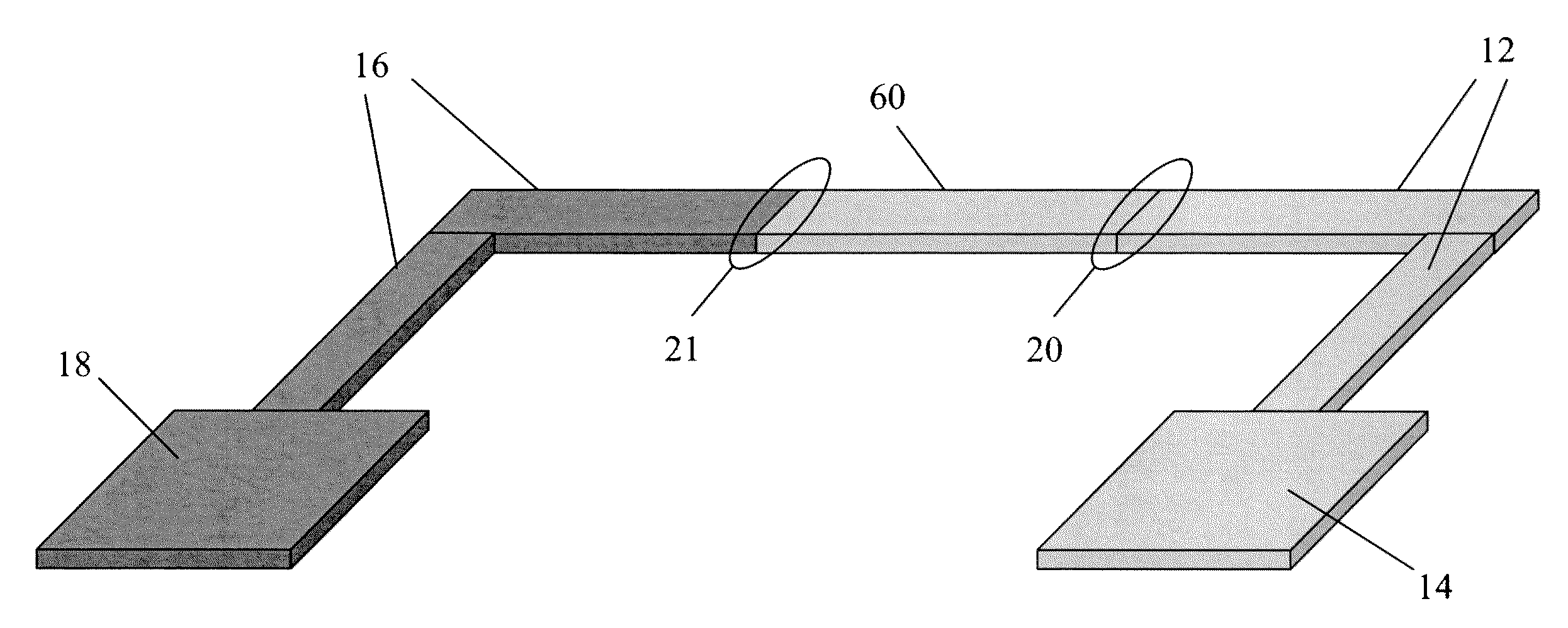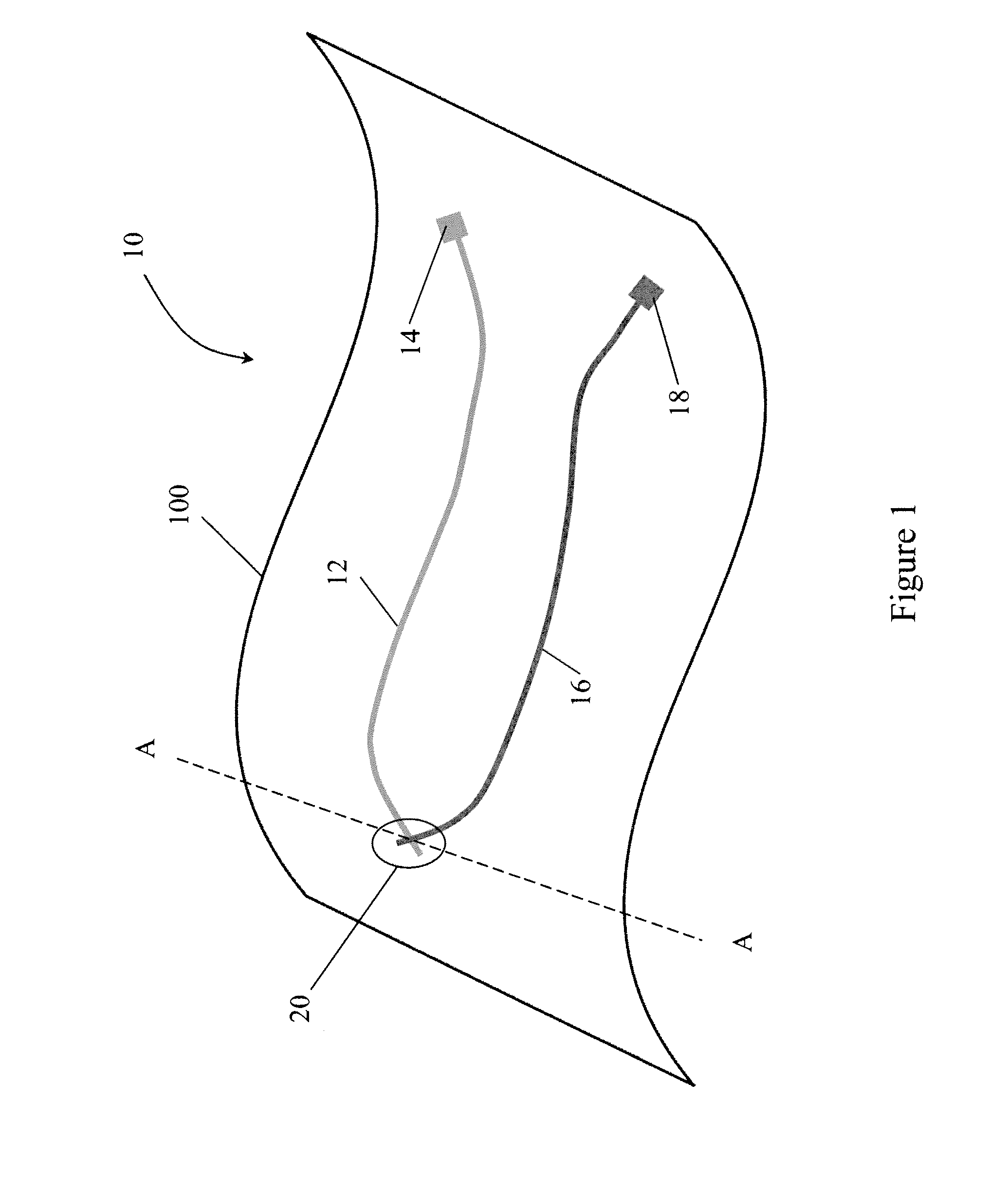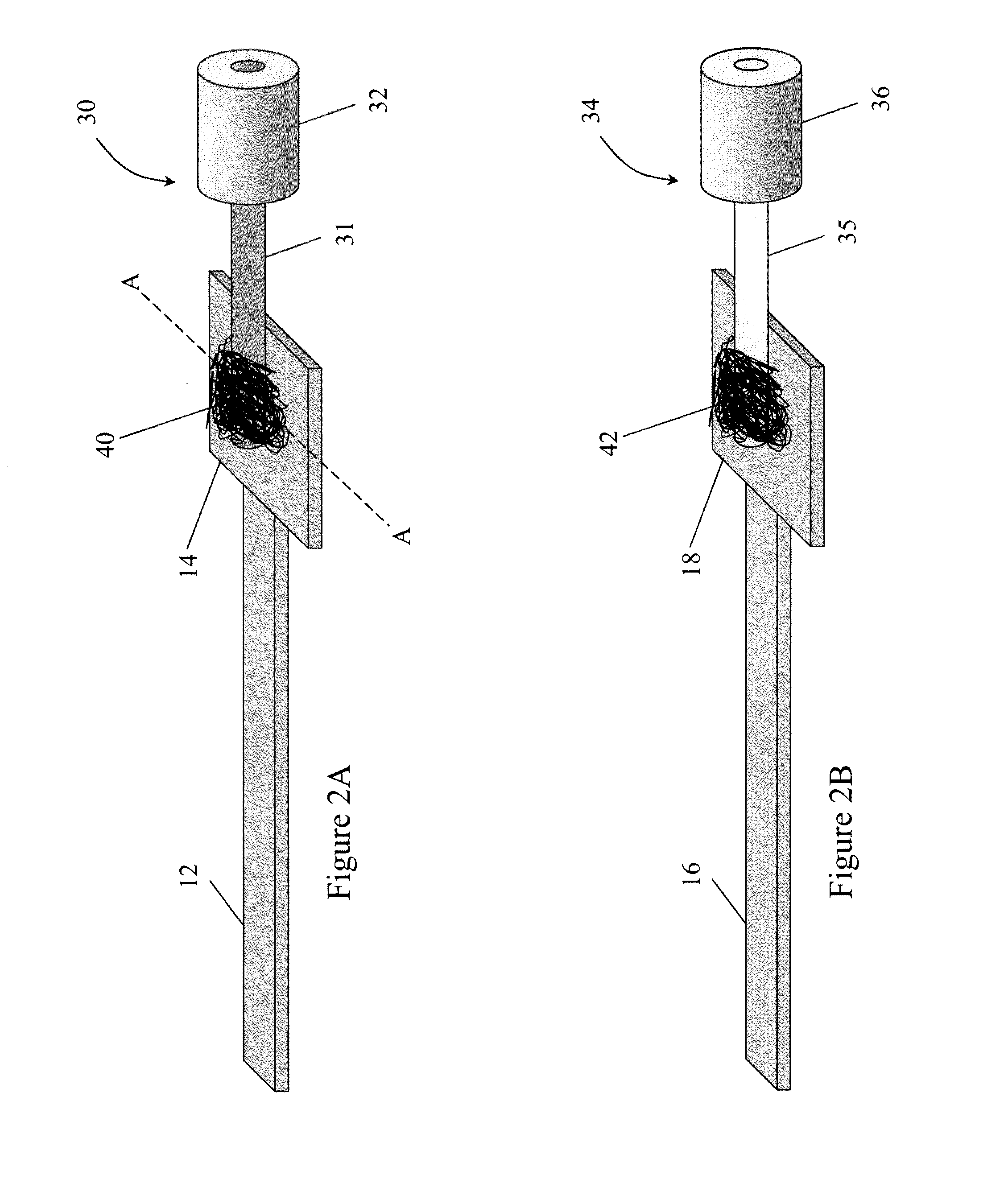Thermocouple device
a thermocouple and printed technology, applied in the manufacture/treatment of thermoelectric devices, instruments, heat measurement, etc., can solve the problems of difficult and sometimes impossible control of temperature measurement capability at a specific location during the procedure, generally not suitable for use on flexible/irregular surfaces, and the thermocouple is somewhat fragile, etc., to achieve more compact, less likely, and more streamlined
- Summary
- Abstract
- Description
- Claims
- Application Information
AI Technical Summary
Benefits of technology
Problems solved by technology
Method used
Image
Examples
example 1
Method of Making the Thermocouple
[0089]Silver ink was prepared by dissolving poly(vinyl chloride) (high molecular weight, Sigma ALDRICH® at a level of 13% by weight in a mixture of tetrahydrofuran, n-methyl pyrrolidone and a-terpineol in a ratio of 55:36:9 by weight. Silver flake (10 μm, >99.9%, SIGMA-ALDRTCH® was added to yield a ratio of silver:poly(vinyl chloride) of 85:15. The total solids were 50% by weight. In order to enable a thorough mixing, the materials were combined using a planetary high shear mixer (KURABO MAZERUSTAR KK-50S)
[0090]Nickel ink was prepared by dissolving poly(vinyl chloride) (high molecular weight, Sigma-ALDRICH® at a level of 13% by weight in a mixture of tetrahydrofuran, n-methyl pyrrolidone and a-terpineol in a ratio of 67.5:26:6.5 by weight. Nickel powder (3 μm, 99.7%, SIGMA-ALDRTCH® was added to yield a ratio of nickel:poly(vinyl chloride) of 85:15. The total solids were 44% by weight.
[0091]The inks were loaded into syringes and extruded through a Mic...
example 2
Testing of Cyclohexane as a Solvent to Prepare Thermocouple
[0096]Thermocouples were prepared in a manner identical to that described in Example 1, except the solvent used for the inks was cyclohexanone. Also, nickel flake (−325 mesh, 0.37 microns thick, 99.8%, Alfa Aesar®) was used instead of nickel powder, and the final percentage of solids of the nickel inks was adjusted to 46% by weight.
[0097]Junctions and traces were printed onto the surface of an endotracheal tube using Micropen® direct writing device as described in Example 1—i.e. cured, covered with a polymeric encapsulant, and leads attached as described previously.
[0098]The printed thermocouple junction on the tube was tested as described in Example 1, except in this case the maximum temperature was raised to 130° C., yielding a response of 20 μV / C for heating and cooling.
[0099]The thermocouple junction on the cuff was evaluated similarly, except the maximum temperature reached was 140° C. Also, after the heating cycle was ...
example 3
Use of Commercially Available Metallic Inks to Make Thermocouples
[0100]Thermocouples were prepared identically to Example 1, except commercially available metallic inks were use. The silver ink used was 101-59 (Creative Materials, Inc. (Tyngsboro, Mass.)) and the nickel inks used was 116-25 (Creative Materials, Inc. (Tyngsboro, Mass.)). The nickel ink was bonded to the nickel wire using the nickel ink as an adhesive; and the silver wire was bonded using a silver epoxy (Epo-Tek® H20E; Epoxy Technology, Inc (Billerica, Mass.)).
[0101]A thermocouple junction positioned on the cuff was evaluated on heating and cooling from 25° C. to 145° C. and back, and had a sensitivity of 20 μV / ° C.
PUM
 Login to View More
Login to View More Abstract
Description
Claims
Application Information
 Login to View More
Login to View More - R&D
- Intellectual Property
- Life Sciences
- Materials
- Tech Scout
- Unparalleled Data Quality
- Higher Quality Content
- 60% Fewer Hallucinations
Browse by: Latest US Patents, China's latest patents, Technical Efficacy Thesaurus, Application Domain, Technology Topic, Popular Technical Reports.
© 2025 PatSnap. All rights reserved.Legal|Privacy policy|Modern Slavery Act Transparency Statement|Sitemap|About US| Contact US: help@patsnap.com



